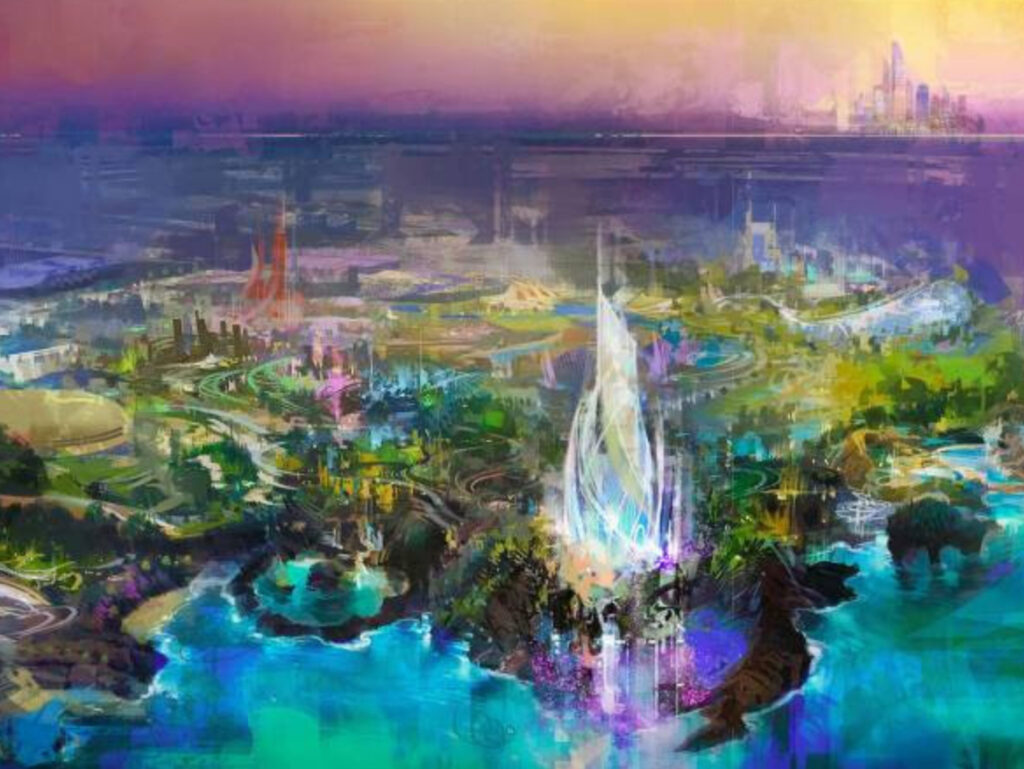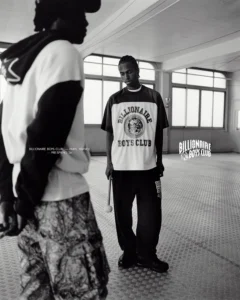In the 20th century, the name “Disney” came to define not just a company, but a worldview—a complex mythology rendered in mouse ears, castle spires, and musical overtures. In the 21st, the House of Mouse has evolved into something even more formidable: a transnational pilgrimage machine. With six theme parks already spanning three continents, Disney has now turned its gaze toward the Arabian Gulf. In a landmark announcement accompanying its latest strong earnings report, the company revealed plans for a new theme park in the United Arab Emirates, specifically along Abu Dhabi’s glittering, resort-lined waterfront.
It will be Disney’s seventh global park—and its first in the Middle East. But what makes this project especially revealing isn’t just its geographic expansion. It’s how the company is choosing to build it.
Unlike its more traditional ventures, Disney will not own the UAE park, nor will it invest its own capital into its construction. Instead, it will license its intellectual property to local developer Miral, which will handle financing, development, and daily operations. Disney’s role will be limited to creative ideation and operational oversight—essentially, imagineering without the balance sheet burden. And once the park opens, Disney will begin collecting royalties for its universe of characters, stories, and branded experiences.
The implications are wide-ranging. This isn’t just about theme parks. It’s about the evolving nature of cultural franchising, soft power, and how Disney’s particular brand of nostalgia and joy has become global gospel—even in regions where its origins might once have seemed distant or incompatible.
From Anaheim to Abu Dhabi: Mapping the Fantasy Franchise
When Disneyland first opened in 1955 in California, it was a modest vision of American futurism and sanitized whimsy—a place where cowboys met rocket ships, and children’s storybooks became walkable worlds. Since then, Disney has grown its experiential empire to include parks in Florida, Tokyo, Paris, Hong Kong, and Shanghai. Each location reflects an increasingly careful negotiation between Disney’s core DNA and local culture.
Abu Dhabi will test the elasticity of that model in a new way. As the capital of a Muslim-majority nation, within a region where Western entertainment has long been selectively filtered, the introduction of a full-scale Disney park raises cultural questions. But it also reflects a deeper truth: that Disney’s stories have already found global resonance. The idea of a Disney princess or a Marvel hero is now as much a part of modern childhood in Riyadh or Doha as it is in Los Angeles or London.
The UAE, particularly Abu Dhabi and Dubai, has positioned itself as a luxury tourism epicenter over the last two decades. But this park won’t just target Western expatriates or elite travelers. One of the most compelling reasons behind Disney’s strategic location choice is demographic: over a third of the world’s population lives within a four-hour flight of the site. That includes not just the Middle East, but also India, Pakistan, parts of Africa, and Central Asia. This is more than a regional play—it’s a hemispheric power move.
Disney Adults Go East: Fandom as Pilgrimage
There’s a term, once used mockingly, now reclaimed with pride: Disney adults. These are fans—often millennials and Gen Zers—who maintain a lifelong devotion to the brand’s ecosystem. They attend theme parks religiously, know obscure trivia, wear character-inspired fashion, and treat each new animated release as a cultural event.
The Middle East park, then, isn’t just an expansion; it’s a consecration. It acknowledges that devotion to Disney is no longer bounded by origin or age. It’s a modern form of pilgrimage, where the destination isn’t Mecca or the Vatican but Main Street, U.S.A. in whatever form it appears on your continent.
This migration isn’t accidental. Disney has built an experiential model that rewards repeat visits, multi-generational participation, and emotional nostalgia. By creating regional parks, the company removes barriers—geographic, financial, linguistic—and invites more people into its orbit. What was once a distant dream vacation becomes an accessible rite of passage.
Miral and the Mechanics of Global IP
While Disney supplies the magic, Miral will supply the mortar. The Abu Dhabi-based developer has a track record of large-scale attractions, including Yas Island, home to Ferrari World and Warner Bros. World Abu Dhabi. That context matters. Miral isn’t just building a park—it’s stitching it into an entertainment ecosystem.
But this partnership also illustrates a broader corporate shift. Disney, once known for tight vertical integration, is now becoming more flexible in its operations. Licensing deals like this one allow the company to expand rapidly without diluting margins or exposing itself to construction risk. It’s the same model applied in streaming (Disney+ licensing regional content) and in merchandise (collaborating with third-party fashion houses rather than producing everything in-house).
As the global economy becomes increasingly fragmented by geopolitical tension, climate instability, and localized consumer behavior, this modular model may prove to be Disney’s most powerful innovation yet.
The Profit Engine Behind the Pixie Dust
The decision to open a Middle Eastern theme park comes at a moment when Disney’s experiential division is outshining nearly every other vertical. In its latest earnings call, the company revealed that U.S. park profits rose 13% year-over-year. That’s no small feat given inflationary pressures and changing travel habits. Globally, Disney plans to invest $60 billion into parks and themed cruises by 2033—a staggering figure that speaks volumes about what the company believes will drive long-term growth.
Streaming platforms like Disney+ and Hulu also showed major gains, earning $336 million last quarter compared to just $47 million the year before. But it’s clear that parks remain Disney’s most potent asset—not only in profit margins but in brand cultivation.
Parks are not passive entertainment. They are immersive, emotionally charged environments that create lifelong fans and consumers. Every churro, every ride queue, every princess meet-and-greet deepens brand loyalty in a way no screen ever could.
And this emotional ROI multiplies when placed in new territories. For many families in the Middle East, this will be their first in-person encounter with a Disney park. The first ride. The first fireworks show. The first Mickey hug. Those moments generate memories—and market share.
Cultural Calibration: The Politics of Joy
Still, questions loom.
How will Disney calibrate its content for the region’s cultural norms? Will costumed characters be allowed to hold hands? Will certain storylines be censored or rewritten? Will pork-free versions of park foods be developed to meet halal requirements?
Historically, Disney has walked this tightrope with care. In Shanghai, for instance, it incorporated local architectural traditions and Mandarin signage while still maintaining the core Disney feel. In Tokyo, it’s known for operating one of the cleanest and most politely run parks in the world, thanks to a uniquely Japanese guest service philosophy. The challenge in Abu Dhabi will be both similar and distinct.
The goal isn’t assimilation—it’s resonance. Disney doesn’t need to change its identity wholesale. But it will need to adapt, with respect and fluency, to regional values. That process will be as much about listening as it is about storytelling.
Looking Five Years Ahead
With no set opening date yet, Disney CEO Bob Iger has suggested a timeline of approximately five years from start to finish. That means we could see the Middle East park open sometime around 2029 or 2030. By then, the landscape of global entertainment may look drastically different: more immersive, more fragmented, more digital, and more fiercely local.
Yet Disney’s bet on in-person magic remains firm. Because when the world gets too virtual, too synthetic, people crave texture. They crave contact. And few brands are better positioned to provide real-world wonder than Disney.
Flow
To build a castle in the desert is a feat of both engineering and imagination. For Disney, it’s also a statement of faith: in its stories, in its fandom, and in its ability to make magic travel.
This park is not just for Disney adults. It’s for the children who will see Cinderella’s castle for the first time. For the teenagers taking selfies with Elsa. For the grandparents on a family trip that bridges generations. For the locals who have never flown to Florida or Paris but will now drive across the Gulf.
And maybe, most tellingly, it’s for Disney itself—a company navigating the future by doubling down on its oldest, most powerful spell: shared joy.
No comments yet.








